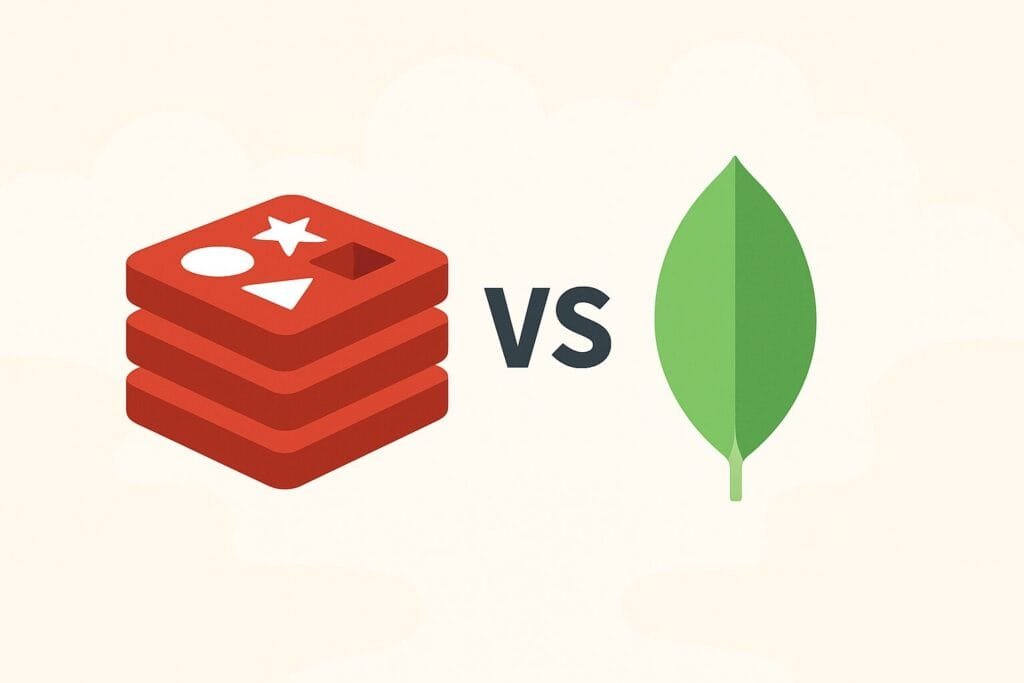When it comes to modern application development, choosing the right database is crucial. Two of the most popular solutions today are Redis and MongoDB. Both are NoSQL databases, but they differ significantly in performance, use cases, and data storage approaches. The big question developers often ask is: Redis vs MongoDB, which one is faster for data storage?
In this article, we will dive deep into their architecture, strengths, and weaknesses. We will also include a detailed comparison table to help you decide which database best fits your project.

What is Redis?
Redis (Remote Dictionary Server) is an in-memory data structure store. It is primarily used as a cache, message broker, or real-time analytics engine. Since Redis stores data in memory rather than on disk, it offers extremely low latency and lightning-fast read/write performance. Redis supports a variety of data structures, including strings, hashes, lists, sets, and sorted sets, making it very flexible.
What is MongoDB?
MongoDB is a document-oriented NoSQL database that stores data in JSON-like documents. It is designed for high availability, scalability, and flexible schema design. MongoDB is disk-based, but it uses indexes and in-memory caching to speed up queries. Unlike Redis, MongoDB is suitable for applications that require long-term persistence, complex queries, and structured storage.
Performance: Redis vs MongoDB
Performance is often the top reason why developers compare Redis and MongoDB. Redis, being in-memory, is generally much faster than MongoDB for simple read and write operations. On the other hand, MongoDB handles larger datasets better because it stores data on disk and offers more advanced query features.
Key Differences Between Redis and MongoDB
| Feature | Redis | MongoDB |
|---|---|---|
| Data Model | Key-value store, in-memory data structures | Document-based (JSON-like documents) |
| Performance | Extremely fast (microseconds latency) | Fast but slower than Redis (milliseconds latency) |
| Persistence | Optional (snapshot or append-only file) | Persistent storage on disk by default |
| Scalability | Horizontal scaling with clustering | Sharding and replica sets for scaling |
| Best Use Cases | Caching, real-time analytics, session storage | Content management, e-commerce, data warehousing |
| Query Support | Basic operations, limited querying | Advanced queries, indexing, aggregations |
When Should You Use Redis?
- If you need ultra-fast read/write performance.
- If your application requires real-time analytics or leaderboard systems.
- If you need a caching layer to speed up response times.
- If you want to store short-lived session data.
When Should You Use MongoDB?
- If your application requires persistent storage of data.
- If you need advanced query features and indexing.
- If your system requires a flexible schema to handle unstructured or semi-structured data.
- If you are building applications such as content management systems, IoT backends, or product catalogs.
Which One Is Faster for Data Storage?
In terms of raw speed, Redis is the winner. Because it is an in-memory store, Redis delivers blazing-fast performance that MongoDB cannot match. However, MongoDB excels in scenarios where you need to store large datasets permanently and perform complex queries.
In other words, Redis is faster for temporary data storage and real-time systems, while MongoDB is better for long-term data storage and complex applications.
Example Use Case
Consider an e-commerce website:
- Redis: Used for storing user session data, caching product details for fast retrieval, and handling real-time recommendations.
- MongoDB: Used for storing product catalogs, order histories, and customer information with advanced querying.
External Resource
If you want to explore official documentation, you can check Redis official website for more details.
Conclusion
So, Redis vs MongoDB: which one is faster for data storage? The answer depends on your use case. Redis is the go-to solution for speed and temporary data handling, while MongoDB is ideal for applications that need persistent storage and advanced queries. In many real-world applications, developers often combine both technologies to take advantage of their strengths.

